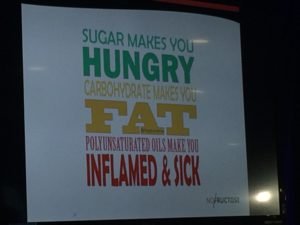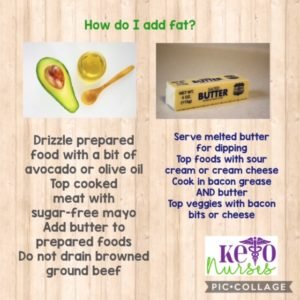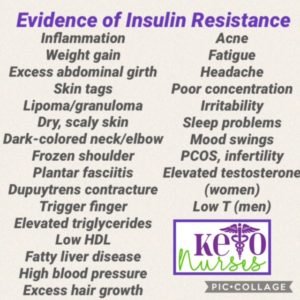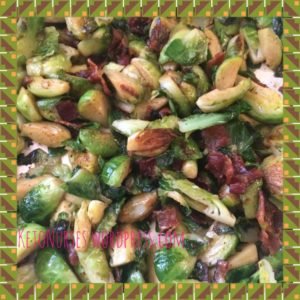For the past 50 years or so, we’ve all been taught that fats are unhealthy for us; we believed these “experts” because they seemed to be honest and respectable scientists and doctors. However, most of these experts had very strong personalities and pushed their way to the forefront of nutrition advisory councils, various dietary boards, and media outlets across the nation.
Capitalizing on President Eisenhower’s heart attack, researchers and nutrition “experts” used the diet-heart hypothesis to set forth recommendations to cut fats. Food processing companies fell right into line with these new low-fat recommendations, producing a myriad of convenient food items. More families became 2 wage-earner supported and life became busier and more hectic; convenient, boxed low-fat foods began to line the shelves and household pantries.
Time rocked on; companies produced more convenient foods. More scientists said low-fat nutrition was good for us. As the low-fat mantra was repeated and stressed, more of us believed it; more of us cut fats out of our lives. We swapped natural butter for factory-developed low-fat margarine; we traded natural farm-raised dairy cow’s milk for low-fat and skim milk, and we succumbed to peer pressure to stop using old-fashioned lard for highly processed and lower fat vegetable oils.
Food-like Items Take Over the Supermarket…
As less natural food entered our daily intake, more chemicals and preservatives found their way into more and more foods. Low-fat became the buzz-word for sure. One of the biggest battles was in the dairy industry. Low-fat and skim milk products were not well-accepted by the public; it just did not seem “natural” to alter nature’s apparently near-perfect food. Finally, in the 1970’s repetition was finally successful, and low-fat sales actually overtook regular whole milk sales. However, as fats were removed from our daily diets, the incidence of heart disease and diabetes sky-rocketed.
Millions of dollars were donated to research studies and organizations with goals that ranged from reducing heart disease, curing diabetes, to the development of dietary guidelines. The major problem here, though, is the list of companies donating to organizations. The American Diabetes Association had been struggling to make ends meet, as it tried to develop resources for millions of Americans being diagnosed with diabetes. (Diabetes is a condition where insulin is no longer able to transport glucose out of the bloodstream into the body’s cells for use. When the glucose cannot leave the bloodstream, it remains within the bloodstream, resulting in very high levels of glucose and serious organ damage. The ADA was trying to organize and develop dietary and management guidelines to aid patients in better control of their health and thus reduce organ damage.) As medications for diabetes were developed, pharmaceutical companies began donating millions of dollars to the ADA and the American Heart Association. ADA and AHA board members often included physicians, researchers, authors, and other medical experts, employed or contracted by pharmaceutical companies. So, not only were the operating expenses for these non-profit agencies being funded by pharmaceutical companies, but these same companies were “loaning” or “sharing” many of their most well-respected experts with these health-oriented organizations trying to help heal Americans.
Remember the food processors? Well, they wanted to help Americans too, so big cereal producers like Kellogg’s and General Mills also began donating money to the ADA and/or the AHA; while intentions were likely honorable, now that we are beginning to understand carbs, fats, and funding relationships, it doesn’t look as honorable as CEOs and other health experts once thought.
Significant Conflict of Interest…
Now, take all that information… Fats have been removed from diets; carbs and grains have replaced them. Grain processors and pharmaceutical companies have become the major funding sources of agencies which are also providing board members and decision-makers to non-profit organizations and governmental agencies that are developing dietary guidelines for Americans. The USDA was urging people to consume 9-11 servings of grains per day. The grain processors and drug companies were financially supporting the non-profit agencies now in control of making dietary recommendations.
Are you still with me? The diet guidelines that we have used for the past 40 years have been established by people with a serious conflict of interest. In no other segment of our society, would rules be allowed to be made by people or companies profiting from the advice. How have we allowed this to happen? What do we do about it now?
It is time to take control over our OWN health and that of our families. The food industry responds to our dollars. If we stop buying all the processed food, they will hear. I recently read an article where cereal companies have already begun to see a drop in sales. They see the handwriting on the wall. The advent of the internet, social media, and ease of interacting online has contributed to grass-roots efforts to change dietary advice, using N=1 experiments. The N in a research study is recognized as the number of participants; a well-designed and reputable study usually includes as many participants as possible in order to account for variables. But over the past 20 years, the internet has multiplied the effects of N=1 experiments via social media. People from across the country are researching and finding their own methods to healing, reversing illness, and taking control of their health.
If we change our spending habits, manufacturers will see the drop in sales and will perform market research to identify food interests; this research will in turn create opportunity for companies to create and sell lower carb, higher fat foods. If we stop eating cereals and low-fat products, companies will stop selling them. If we eat more vegetables and fats, more farmers will grow more vegetables and animals. Becoming a healthier nation really is a grass-roots effort…pun intended…LOL
Cut the CRAP…
We START by cutting out the CRAP – literally. C – stands for carbonated drinks; R – stands for refined sugars. A – stands for artificial sweeteners; P – stands for processed foods.
Basically, if someone else made, bagged, boxed, or canned it, it isn’t likely to be healthy for us. To keep food stable on the grocery shelf for 3-6 months at a time, there are likely unhealthy preservatives and chemicals that contribute to high blood pressure, elevated glucose, and organ stress. Even the FDA recently published a statement that says most processed foods should no longer be recognized as safe for human consumption, due to the high content of trans fats used.
Carbonated drinks contain lots of chemicals, sugars, and chemicals that companies are not required to divulge on labels. Carbonated drinks contain carbon dioxide; remember basic breathing anatomy? We breathe in room air, consisting of nitrogen and oxygen and we breathe out carbon dioxide. Why should we have a DESIRE to swallow hundreds of ounces of carbon dioxide weekly, when they human body recognizes it as a toxin that should be eliminated by the lungs with every breath? Many people who have lung problems often find that the more soda they consume, the harder it is for them to breathe; why? Because intake of carbon dioxide stresses the sick lungs; the weakened lungs are struggling to keep up with the demands of normal life and then there’s a whole new load of carbon dioxide to eliminate.
Refined sugars are extremely dangerous; high intake of sugars causes elevated glucose levels and signals the pancreas to secrete insulin in order to transport the extra glucose into cells and triggers a myriad of processes throughout the body to help keep blood levels of sugar within normal range. When we overeat carbohydrates that our bodies cannot utilize right away for energy, the liver begins to store some of the extra sugar as glycogen; glycogen is like “money in the bank” for our bodies. After glycogen fills muscles and the liver, the excess sugars are then knitted together to form chains of triglycerides; this process allows for longer-term storage… like putting money into a trust or annuity – it’s there, but it takes more work to get it back out. Elevated glucose and triglyceride levels within our bloodstream contribute to thick, sticky blood… like syrup. Imagine pouring syrup from one bottle while you pour water from another. What do you see? Syrup moves slowly and in very thick and large globules or streams, while water runs freely and in a thin stream. Which do you think moves more easily through tiny blood vessels? Which do you think forms microscopic beaver dams, preventing proper nutrition and oxygenation to body parts?
Artificial sweeteners have been found to contribute to all sorts of potential hazards to health; from chemical poisonings to Parkinson’s, to multiple sclerosis, hundreds of ailments have been linked formally and informally to the use of aspartame, saccharin, and other artificial sweeteners.
Processed foods, as mentioned previously, contain all sorts of preservatives and trans fats and can sit on grocery store shelves for many, many months at a time prior to purchase; many foods come with expiration dates up to a year away from moment of final production. Foods are packaged, boxed, and shipped via boat, train, and truck for days to weeks at a time, often sitting in shipping containers in the heat or cold of the day, in warehouses with poor ventilation, and then are stocked on a shelf, just waiting for your purchase. Chemicals and colors used as food additives have been linked to allergies, hyperactivity, high blood pressure, and even cancers.
Time to Make a Change…
Reducing the CRAP is where we start — start by picking something you are willing to live without and ADD some healthy fats. Many people are afraid of change; they don’t want to spend money on another “fad” diet. Patients are tired of yo-yo diets and are skeptical to make a change. So start small. Pick a couple things you KNOW are unhealthy and replace it with vegetables and healthy fats. And gradually keep this habit up until all the unhealthy items are completely out of your pantry. While some people are willing to make massive changes, it just isn’t practical for many of us; most of us have hundreds of dollars invested in our groceries in our pantries and refrigerators. I couldn’t afford to throw all that money away either, so starting small helps avoid a huge grocery bill.
The other problem that many people believe about eating healthy is that it costs more. This myth can often be seen as real when shoppers try to ADD healthy groceries to their normal purchases. And in the past, buying “healthy” foods would be much pricier than “regular” foods; for example, replacing a $2 loaf of white bread with a $4 loaf of whole grain bread doubles expenses. Eliminating CRAP, though, is about cutting out expenses… NOT buying processed and pre-packaged foods. When most of these food items are cut out, most people actually see a reduction in grocery costs. Focusing on natural, farm produce and less expensive meat cuts, not only reduces costs, but increases nutrient density…. Meaning, you get more vitamins and nutrition for your dollar than when you eat processed foods. Another benefit to eating low carb, high fat is that we usually purchase the higher fat-content meats; I buy the 80/20 ground beef, at a savings up to $1 per pound or more. We eat chicken, pork, turkey, beef, fish, and other wild game. We use heavy cream and butter; we eat fresh and frozen vegetables, and we drink bulletproof coffee. Our grocery bill runs about the same now as it did before low carb nutrition. We just get more nutrients for our dollar now.
It’s Just Too Expensive…
In general, fats are not very pricey, and keep you feeling much fuller than carbohydrates. A mug of bulletproof coffee can keep me full til around 2-3 pm every day — No need to munch, no growling tummy, no snacking or craving. On work days, I do carry a tiny plastic box of leftover dinner items for lunch the next day. Occasionally, I have a piece of cheese or a handful of toasted almonds for a snack. I can buy a 3 pound bag of almonds and use it over about 10-12 weeks; eating a small handful once every 3-4 days is a nice addition nutritionally and costs approximately $.65 per snack… less than most other individually-packed commercial snacks. So, while some foods may seem a little more expensive on this nutrition plan, it really works out about the same. Fewer foods consumed in smaller amounts, with more nutrients available for absorption and use, with little difference in expenses, adds up to a much more sustainable, long-term lifestyle change that is much easier to maintain.
So, what’s holding you back? You’ve seen the articles. You’ve seen the dangers. You’ve known for some time you needed to eat healthier. You’ve heard the success stories of low carb, high fat nutrition. What is keeping you from becoming healthier and reducing your risk of heart attack or stroke?


